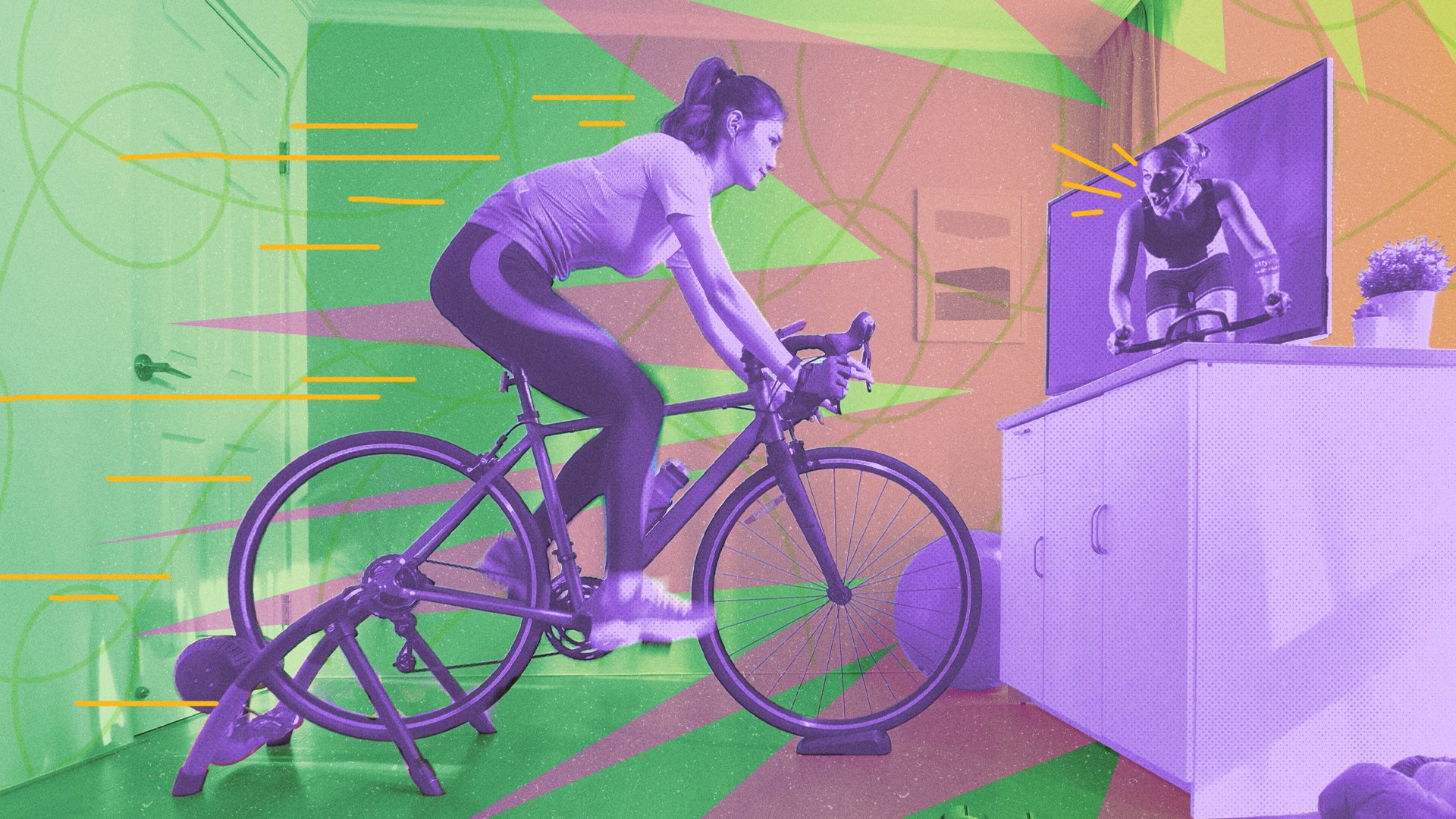Amazfit recently launched its Helio Strap, the third of the three once-rumored Whoop-like trackers to be officially announced. It’s the only one you can buy right now, and its features and price (just $99.99) look pretty sweet.
A brief history lesson: The first of the three Whoop-like trackers to be announced was something from Polar. That’s all we know—there’s no name of the device or even a photo, although the shadowy image from the press release looks a lot like the Polar 360, a device that was never marketed directly to consumers. The price has not been announced, but it will be “subscription-free.” The second was Garmin’s Index sleep monitor, which sells for $169.99, is also subscription-free, and is meant to be used only for sleep, not sports. (I found the product description to be underwhelming, though I haven’t gotten my hands on a review unit yet.) Finally, we have Amazfit’s $99 Helio band, which was previously teased by pro Hyrox athletes and just became available to the rest of us last week. My review unit is on its way, but I can say from looking at the specs that this is the band I’m most excited for. It’s what Garmin should have released, and it sets the standard that Polar will have to match.
The price is hard to beat
It’s hard to envision paying more than $100 for a screenless strap. After all, the idea is that it does half of what a watch does (it collects data, but doesn’t have a screen to display it). I try to give Whoop a pass on being screenless because its app is so thoughtfully designed and does a ton of analysis and planning—in Whoop’s case, you’re really paying for the service more than the hardware. But if you’re going to buy a device for a flat fee, I find it hard to stomach Garmin’s $169 price tag when you would likely wear it in addition to a Garmin watch that costs anywhere from $200 to possibly over $1,000. Also, Garmin’s device is just for sleep. The Helio strap is for sleep and workouts, so you arguably get twice as much use for just a little over half the price.
You can use it for both exercise and sleep
Garmin’s device is just for sleep, and Polar’s may be for 24/7 wear (we don’t know yet), but Amazfit’s is explicitly meant for exercise in addition to wearing it to sleep. The company boasts that it has 27 exercise modes, which doesn’t sound like a ton, but I’m intrigued by the “smart strength training” and a Hyrox race mode. (Hyrox is a fitness racing sport, where competitions have you run between exercise stations, doing things like burpees and sled pushes. Several Amazfit watches have a mode that can keep track of the different segments of this competition.)
Amazfit plans to sell an armband for the Helio strap, although their website says it’s not available yet. Personally, I love when trackers have an armband option for strength or functional fitness activities, since kettlebells and wrist wraps tend to interfere with anything wrist-based.
According to press materials, the Helio strap has a 10-day battery life. The data from the strap feeds into the Zepp app, the same as that of other Amazfit watches, so you can swap between the Helio strap and any Amazfit watch you may happen to own, like the T-Rex 3 or the Bip 6—or the new Balance 2, which somehow manages to stuff dual-band GPS, offline maps, and a sapphire glass screen into a $299 package. It’s the kind of thing Garmin watch users have been asking for: Something that lets people take their watch off while still feeding data into the same app as their regular watch. Something that has a good battery life and a relatively affordable price tag. Something you can wear during activities, not just for sleep.
The Helio strap even features something called BioCharge, which sounds a lot like Garmin’s “Body Battery.” Body Battery is a number that goes up when you sleep or recover, and goes down when you exercise or are stressed. I ignore it, personally, but I know a lot of people like to keep tabs on a numerical metaphor for how energetic they might feel throughout the day.
The one thing I’m not so sure about is GPS. It’s not mentioned in any of the Helio strap’s specifications, and a note about battery life mentions that they’re assuming outdoor workouts occur with the strap linked to your phone’s GPS. This is similar to what Whoop does, letting them keep the device small and power-efficient by completely eliminating location tracking tech. But it comes with tradeoffs: Your phone’s GPS may not be as accurate as a watch (depending on your phone, of course), and it eats into your phone’s battery rather than the device’s. That said, if you’re tracking an outdoor run, you probably want to wear your watch anyway—bringing us back to the two-device setup that Amazfit probably hopes you’ll buy into.
The Daily
Ready to do everything better?

Jordan Calhoun
Get daily tips, tricks, and tech guides from Jordan and the team.
The Daily
Ready to do everything better? Get daily tips, tricks, and tech guides from Jordan and the team.
























